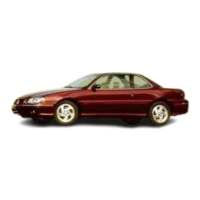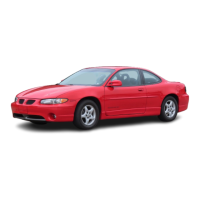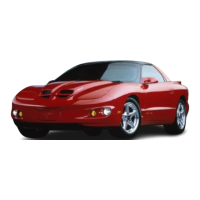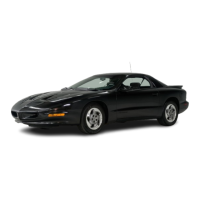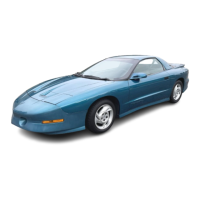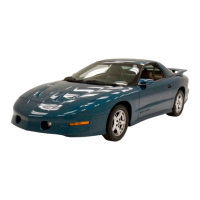Part
C:
Periodic
Maintenance
Inspections
Listed below
are
inspections and services which should be
performed at least twice a year (for instance, each spring
and fall).
You
should let
your
GM
dealer’s service
department
or
other qualified service center do these
jobs.
Make
sure
any necessary repairs are completed at once.
Proper procedures to perform these services may be
found
in
a
GM
service
manual. See “Service and Owner
Publications” in the Index.
Steering and
Suspension
Inspection
Inspect the front and rear suspension and steering
system for damaged, loose or missing
parts,
signs of
wear
or
lack
of
lubrication. Inspect the power steering
lines and hoses for proper
hook-up,
binding, leaks,
cracks, chafing, etc.
Exhaust
System
Inspection
Inspect
the
complete exhaust system. Inspect the
body
near
the exhaust system. Look for broken, damaged, missing
or
out-of-position
parts
as
well
as
open
seams,
holes, loose
connections
or other conditions which could cause
a
heat
build-up in the
floor
pan
or could let exhaust
fumes
into
the vehicle. See “Engine Exhaust”
in
the
Index.
Radiator and
Heater
Hose Inspection
Inspect the hoses
and
have them replalced
if
they
are
cracked, swollen
or
deteriorated. Inspect all
pipes,
fittings and clamps; replace
as
needed.
Throttle
Linkage Inspection
Inspect
the
throttle
linkage for interference
or
binding,
and
for damaged
or
missing parts. Replace
parts
as
needed.
Replace any cables that have
high
effort or excessive wear.
Do
not lubricate accelerator and
cruise
conbd cables.
Wear
Axle
Service
Check the
gear
lubricant level in
the
rear axle
and
add if
needed. See “Rear Axle” in
the
Index.
A
fluid loss may
indicate
a
problem. Check
the
axle
and
repair it if needed.
Brake
System
Inspection
Inspect the complete
system.
Inspect brake lines and
hoses
for
proper hook-up, binding, leaks, cracks,
chafing, etc. Inspect disc brake pads for wear and rotors
for surface condition.
Also
inspect drum
brake
linings
for wear and cracks. Inspect other
brake
parts,
including
drums,
wheel cylinders, calipers, parking brake,
etc.
The
parking
brake
is self-adjusting and no manual
adjustment
is
required. You may need to have your
brakes inspected more often if
your
driving habits
or
conditions result in frequent braking.

